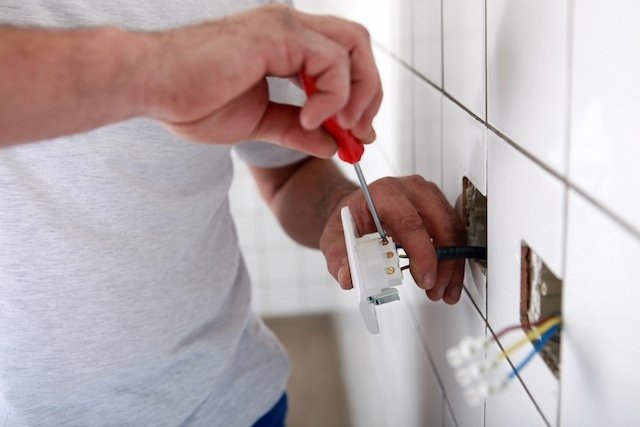In the event of an electric shock, it is important that first aid is started as quickly as possible to prevent the electric current from causing too much damage to the body and causing serious complications, such as burns, cardiac changes and neurological problems.
Therefore, it is recommended that the energy source be cut off and the person who suffered the shock be removed from the energy source. Then, call the ambulance and check whether the person is conscious or not, and start cardiac massage and mouth-to-mouth resuscitation if they are not breathing.
Knowing what to do in the event of an electric shock is very important because, in addition to helping to avoid consequences for the victim, it also helps to protect the person doing the rescue against the dangers of electrical energy.

First aid
First aid in case of electric shock is:
- Cut or turn off the power sourcebut do not touch the victim;
- Move the person away from the electrical source that was causing the shock, using non-conductive and dry materials such as wood, plastic, thick cloth or rubber;
- Call an ambulancecalling 192;
- Check if the person is conscious and breathing:
- If you are aware: calm the victim until the medical team arrives;
- If you are unconscious but breathing: lay it on its side, placing it in a safe lateral position. Find out how you can do this correctly;
- If you are unconscious and not breathing: start cardiac massage and mouth-to-mouth resuscitation. See how the massage should be done;
The last step of first aid should be continued until medical help arrives.
Main complications of electric shock
In addition to the immediate risk of death when the current is too high, electric shock can affect the body in other ways, such as:
1. Burns
Most accidents with electric shocks only cause small burns to the skin at the site of the shock, however, when the voltage is too high, excess electricity can affect internal organs.
When electricity manages to reach internal organs, it can cause serious problems in their functioning and, therefore, the person may need to undergo treatment for kidney, heart or other affected organ failure, for example.
2. Heart problems
When a small electrical current passes through the chest and reaches the heart, it can cause atrial fibrillation, which is a type of cardiac arrhythmia that must be treated in the hospital to avoid putting the victim’s life at risk.
When the electrical current is very high, as in the case of shocks from high voltage poles, the current is so high that it interferes with the electrical activity of the heart and the muscle, causing cardiac arrest that can result in death.
3. Neurological injuries
All electrical currents can affect nerves in some way, so when there are repeated or very strong shocks, the structure of the nerves can be affected, resulting in neuropathy. Neuropathy can cause symptoms such as pain or numbness in the legs and arms, difficulty moving muscles or frequent dizziness, for example.




